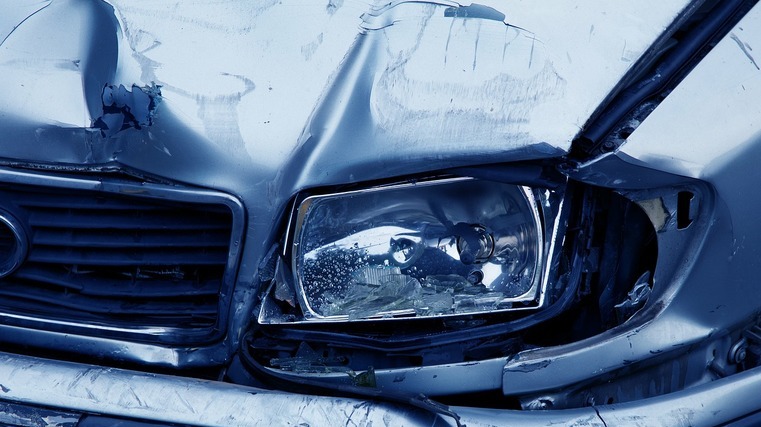Car buyers to get full picture

The Motor Vehicle Disputes Tribunal heard at least 11 cases relating to Australian write-offs last year and highlighted the issue in its annual report.
In one case, Philip Slimm discovered that his 2013 Volkswagen Golf TSI Cabriolet had been classified as a statutory write off in Queensland. Slimm said he wouldn't have bought the $22,000 car had he known its history.
Autofile has learnt that there are now moves under way to give motorists, like Phillip Slimm, who unknowingly buy damaged used vehicles, a full history, including whether they have been written off or damaged overseas.
According to Radio NZ’s latest report on the matter, the establishment of a centralised damage register is in the motion.
An industry-wide group, which includes the Motor Transport Association (MTA), VIA (the Imported Motor Vehicle Industry Association), the Motor Industry Association (MIA), Collision Repairs Association (CRA), Repair Certifiers Association (RCA) and the Insurance Council, are now working with the NZTA to look at a damage register for all vehicles, both imported and on the road in New Zealand.
Radio NZ talked to David Vinsen, chief executive of VIA, and Craig Pomare, chief executive officer of the MTA, about whether they believe there is a problem.
“It depends on what problem you are talking about,” says Vinsen. “We are not opposed at all to having a crash register. It should be comprehensive. It should include cars from overseas, but also cars that are in service in the fleet here in New Zealand.
“Currently, if someone has a crash in a car and it is repaired, regardless of the severity it is just released back into the fleet and then on-sold with no record of that damage.”
If the car is imported, then that’s a different process, says Vinsen.
“There is quite a comprehensive and intrusive inspection and that determines the condition of the vehicle when it is imported.
“If it is identified as having damage at the time of importation, then that is recorded on the vehicle’s history or its CIN card. But if the vehicle has been repaired prior to import then it is very difficult to know what the history is.”
A trader must attach a consumer information notice (CIN) to all used motor vehicles, which contains certain information including whether a vehicle was recorded as damaged when it was imported.
“A lot of other countries don’t have records of crash damage,” says Vinsen. “If a vehicle is repaired, then sold and imported into New Zealand, it is very difficult to get access to that information.”
There is a border inspection undertaken when the car arrives in New Zealand. However, as Vinsen argues, while the inspection is “stringent, accurate and comprehensive, it really is just a snapshot of the vehicle at the time, rather than a complete historical story prior to import”.
The legal requirement of handing over the CIN card is also problematic. In Slimm’s case, while the dealer disclosed on the CIN that the vehicle was a damaged import, the tribunal concluded Slimm should have been told about the write-off status and was awarded $4,000.
“The CIN card is inadequate and we are tightly limited as to what information we can put on there,” says Vinsen.
Pomare adds: “There is only one notification that is required for a car that’s damaged, but other than that it does come down to the due diligence of the buyer and the dealer selling the vehicle to make sure they give you and I the right information.”
“We are of the belief that the consumer should be well-informed, but they need to do some due diligence and take some responsibilities themselves,” says Vinsen.
While those who are registered motor-vehicle dealers are required by law to provide a CIN notice, only 30 per cent of car sales go through this process.
“Around 70 per cent of sales in New Zealand are private, so there is no obligation what so ever to disclose the history or the CIN notice,” says Pomare.
“Even if I initially bought the vehicle from a dealer and have a CIN card, once it is a private sale the legal obligation goes away.”
Pomare believes that safety is the real issue in play here.
“Safety has been a principal of ours for 101 years now, so for us, we want to make sure that the consumer has the information they need to make a good decision.”
So, what’s the centralised damage register going to look like?
“One of the things we have been working with the NZTA to do is to firstly, repair the old system bring that into the 21st century, but part of that is to allowing us to record damage information,” says Pomare.
“You and I can jump on a website put in the details of the car we want to buy, and up comes all that information in one place.”
As Pomare contends, the challenge is going to be transferring the existing histories of cars already on the road to the network.
“The issue is we don’t have a transportable record of the history of that car. This will be a challenge for the cars already on the road. We can put details of what their make, model and year are on the database, but the damage history doesn’t travel with the car, except when it is imported and that tick is placed.”





